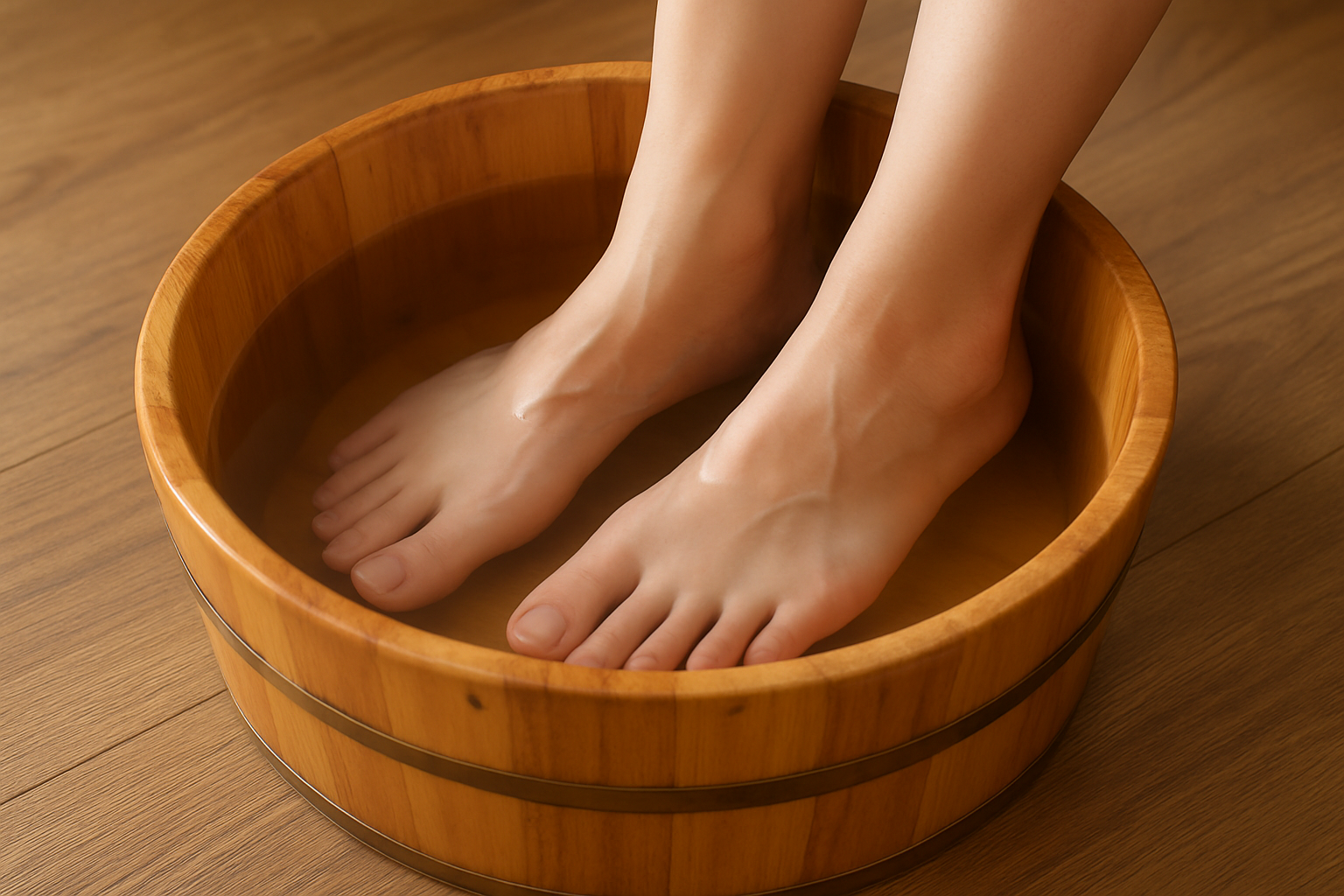Doctor Le Chi Hieu, from the Department of Thoracic and Vascular Surgery at Tam Anh General Clinic, District 7, explains that while many people believe hot water soaks provide quicker pain relief, they can worsen varicose veins over time. Conversely, cold water constricts blood vessels and stimulates organ activity through neurotransmitter regulation. Combining cold water soaks with massage at home can offer significant relief and improve symptoms.
Cold water soaks relax veins, improving blood flow and reducing pressure on weakened venous valves.
The cold temperature helps relax the lower extremities and reduces pressure in affected veins, easing pain and discomfort.
Soaking stimulates the lymphatic system, removing excess fluid and reducing swelling and inflammation.
 |
Proper foot soaking offers numerous health benefits for those with varicose veins. Image generated by AI |
Proper foot soaking offers numerous health benefits for those with varicose veins. Image generated by AI
While beneficial, Doctor Hieu cautions that foot soaks can pose risks. Skin irritation can occur if unsuitable herbs or essential oils are used. Temporary loss of sensation in the feet can also occur with prolonged soaking, increasing the risk of falls. Patients with peripheral neuropathy or diabetic nerve complications should exercise caution as they may not accurately perceive the water temperature. Additionally, those with peripheral vascular disease should avoid this method due to its potential to reduce blood flow to the extremities.
Doctor Hieu recommends the following steps for effective cold water foot soaks:
Step 1: Prepare a basin of cold water between 10 and 15°C.
Step 2: Wash your feet thoroughly.
Step 3: Soak your feet for 15 minutes, gently massaging them. Avoid soaking for more than 20 minutes, and preferably soak in the evening before bed.
Step 4: Dry your feet thoroughly and go to bed.
Foot soaks are a supplementary treatment for varicose veins. They should be combined with other measures like wearing compression stockings and elevating legs while sitting or lying down. Patients should avoid prolonged standing or sitting in one position and refrain from wearing high heels for extended periods.
If symptoms worsen—including aching calves, cramps, leg swelling, numbness, visible varicose veins, or skin ulcers—patients should seek medical treatment. Options include sclerotherapy, endovenous laser ablation, and bio-adhesive glue injections. Untreated varicose veins can lead to dangerous complications like hemodynamic disturbances, venous thromboembolism, and circulatory stasis.
Thu Ha
| Readers can submit questions about cardiovascular diseases here for expert answers. |












